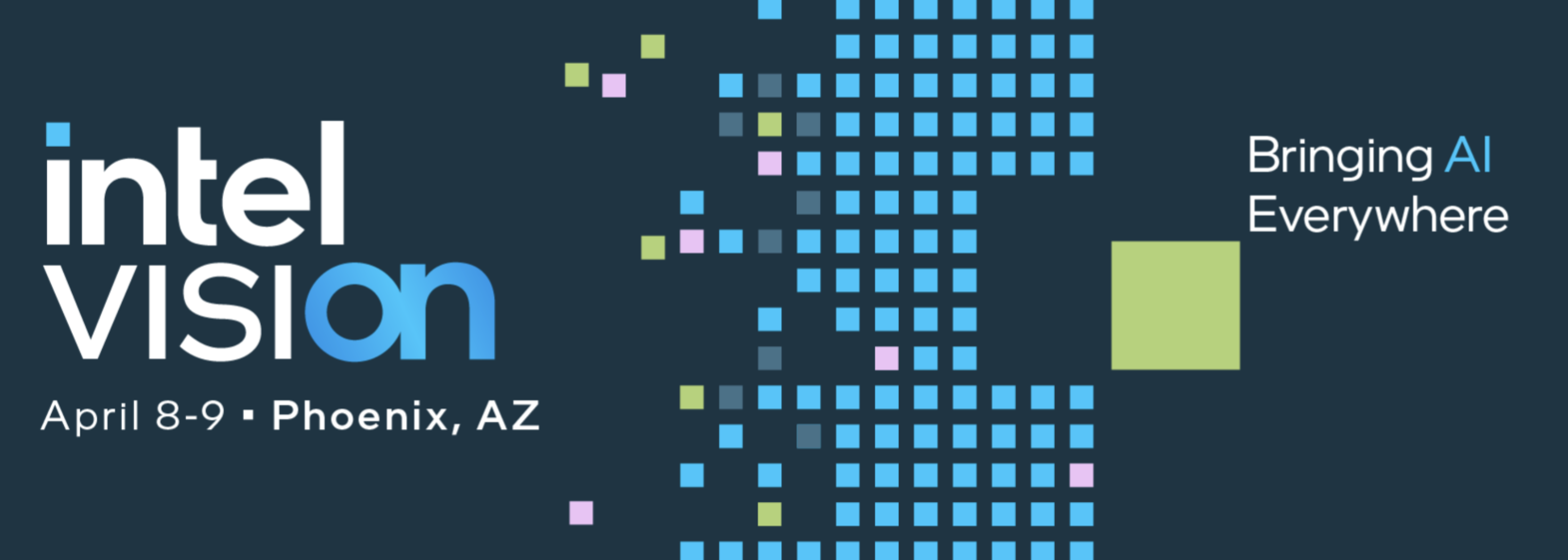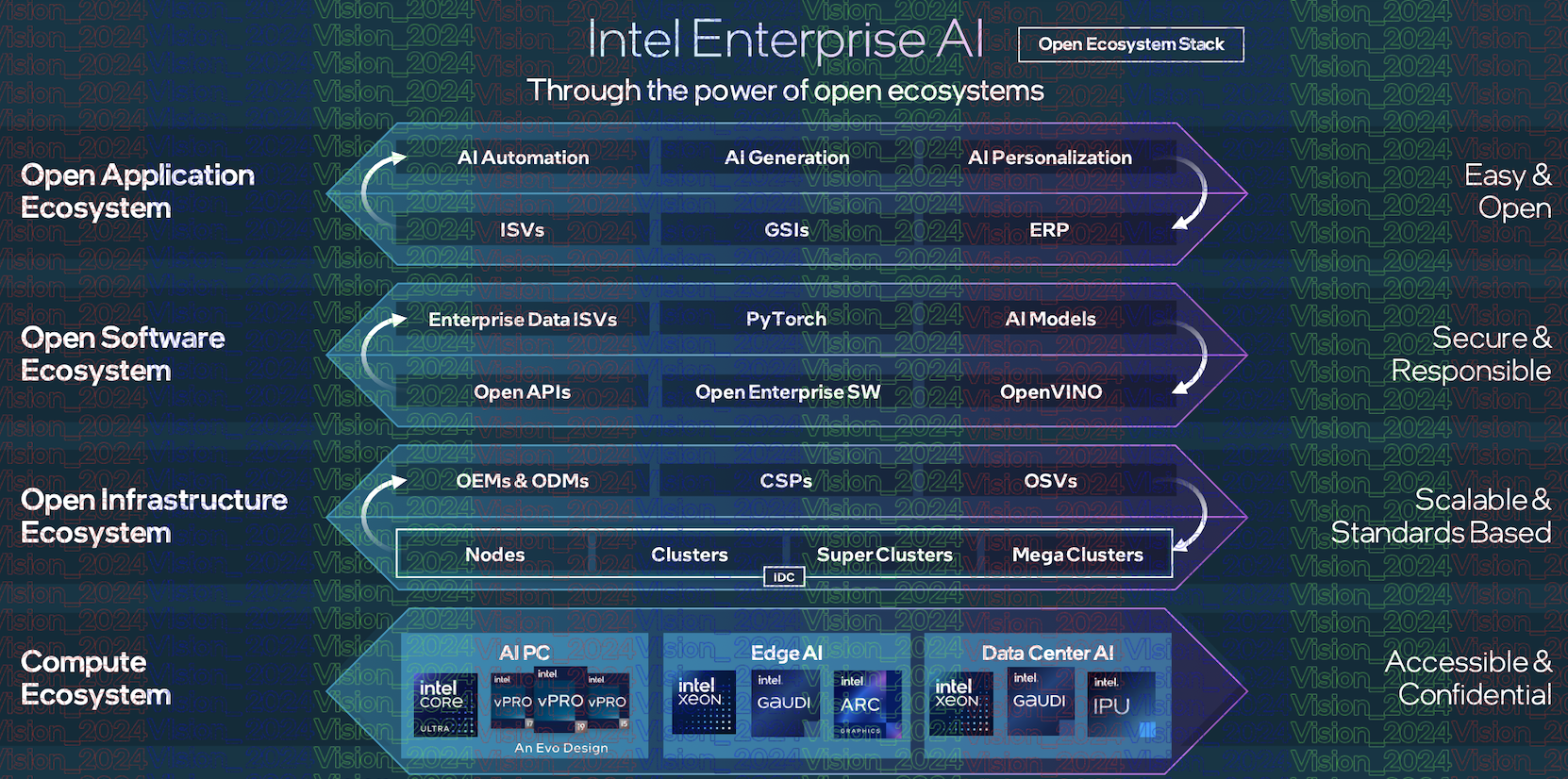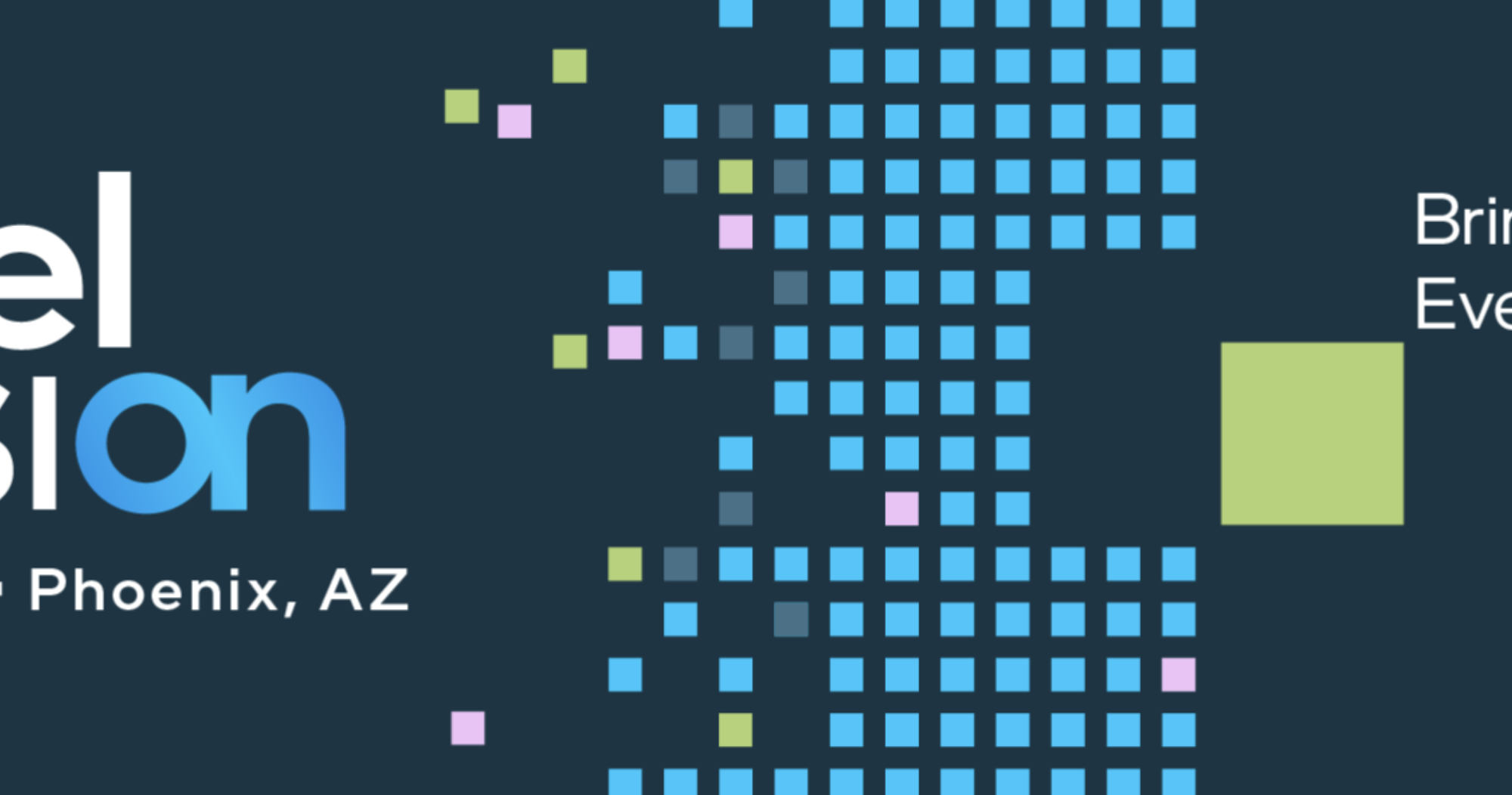
On April 8 and 9 Intel held its Intel Vision event in Phoenix Arizona. This is Intel’s premier event for business and technology executive leaders to come together and learn about the latest industry trends and solutions in advancements from client, to edge, to data center and cloud. The theme of this year’s event was Bringing AI Everywhere. The event was packed with impressive information from all over the industry. Intel provided a briefing before the event that dove into some of the announcements and advances that would be presented. I will dig into what was presented in this post, along with a summary of Pat Gelsinger’s keynote at the event. The content is compelling – indeed it appears that Intel is bringing AI everywhere.
Briefing Overview
Attending the briefing were three key members of the Intel team. Their combined experience is quite impressive. They are:

Sachin Katti, Senior Vice President & General Manager of Network and Edge Group. Prior to his current role, Sachin was CTO of the Network and Edge Group. Prior to Intel, he had a long career as an Associate Professor at Stanford University. He also founded or co-founded several companies as well. Sachin holds a Ph.D. in Computer Science from the Massachusetts Institute of Technology.

Das Kamhout, Vice President & Senior Principal Engineer in the Intel Data Center and AI Group. Das has worked at Intel for 27 years across many areas including AI, cloud, enterprise software, and storage. He has also been a Board member of the Cloud Native Computing Foundation.

Jeff McVeigh, Corporate Vice President & General Manager of Software Engineering Group. Jeff has also worked at Intel for 27 years. He has held leadership positions in the Software Engineering Group, Super Compute Group, Data Center XPU Products & Solutions, and Visual Computing Products. He holds a Ph.D. in Electrical and Computer Engineering from Carnegie Mellon University.
The presentation began with some macro-observations. Enterprises have reached an AI inflection point, signified by swift adoption and supercharged by GenAI. Gartner estimates that 80% of enterprises will use GenAI by 2026 and at least 50% of edge computing deployments will involve machine learning. IDC expects the $40B enterprise spend on GenAI in 2024 to grow to $151B by 2027.
All this is ahead of us only if we’re able to unlock AI’s full potential. Intel reported that only 10% of organizations launched generative AI solutions to production in 2023. Furthermore, 46% of experts cited infrastructure as the biggest challenge in productionizing large language models. Barriers to adoption persist, openness and choice are limited and transparency, privacy and trust concerns are rising.
Against this backdrop Intel is making several announcements to take down the barriers to adoption, bringing AI everywhere. The five broad areas of focus were defined as follows:
- A scalable systems strategy to address all segments of AI within the enterprise with an open ecosystem approach
- Enterprise customer AI deployments, successes and wins
- Open ecosystem approach to advance enterprise AI
- Intel Gaudi® 3 AI accelerator to serve unmet demand for Generative AI solutions
- Edge Platform and Ethernet-based networking connectivity products targeted for AI workloads
Let’s look at some of the details.
A Tour of the Announcements
Today, enterprise data and AI models live in two distinct worlds. Enterprise data is secure and confidential, rooted in specific locations, mature and predictable and has a CPU-based processing model. AI models, on the other hand are based on public data, are characterized by rapid change with varied degrees of security and have an accelerator-based processing model.
Intel aims to unlock the enterprise AI model through the power of open ecosystems. Attributes of this approach include:
- An Application Ecosystem that is easy and open, by working with industry leaders to provide end-to-end AI enterprise solutions at scale
- A Software Ecosystem that is secure and responsible, by driving an open software ecosystem that bridges enterprise data and AI models
- An Infrastructure Ecosystem that is scalable and reference based, by shaping the enterprise AI infrastructure through reference architectures, together with partners
- A Compute Ecosystem that is accessible and confidential, by building safe and AI capable compute platforms from client to data center
The diagram below is a top-level view of how these pieces fit together. Many more details of the approach were presented, along with a description of the enterprise AI software stack and planned enhancements.

The presentation also discussed Intel Developer Cloud that is used by leading AI companies. Intel explained that the platform provides everything you need to build and deploy AI at scale. The diagram below shows today’s processor lineup.

The newest version of the Intel Gaudi AI accelerator brings speedups of 2X – 4X for AI compute, 2X for network bandwidth and 1.5X for memory bandwidth. Benchmark data includes 40% faster time-to-train vs. H100 and 50% faster inferencing vs. H100. The launch partners for this accelerator are impressive, with Dell Technologies, HP Enterprise, Lenovo, and Supermicro.
The Intel Xeon6 Processor with E-cores was also discussed with a 2.4x performance per watt improvement and 2.7x performance per rack improvement. Comparing the second generation Intel Xeon processor to Xeon 6, there is over one megawatt of power reduction delivered. To put that number in perspective, it represents the energy savings of a full year’s worth of electricity use for over 1,300 homes.
The work Intel is doing with high-profile partners on confidential computing was also discussed. A preview of work to deliver connectivity designs for AI was previewed as well. The AI PC era was also discussed. Here, Intel plans to ship 100 million AI accelerators by the end of 2025. The company’s footprint in this market is substantial. Comprehensive strategies and platforms to support AI processing at the edge were also detailed, with 90,000+ edge deployments and 200M+ processors sold.
Pat Gelsinger’s Keynote

Pat was introduced as Intel’s Chief Geek. He lived up to that description with a 90-minute technology tour-de-force describing Intel’s impact, announcements, and plans. AI was front and center for most of Pat’s presentation. He described Intel Foundry as the systems foundry for the AI era and Intel products as modular platforms for the AI era. A memorable quote from Pat is “every company becomes an AI company.”
Pat then described the major re-tooling that is underway to deploy AI PCs across the entire enterprise. He discussed products that enable AI across the enterprise while reducing power and increasing efficiency. There were several impressive live demos of new technology and its impact, including an AI PC demo livestreamed from inside an Intel fab.
Pat also invited many distinguished guests to join him on stage or via the Internet to describe what their organizations are doing with Intel technology. Among those organizations were Accenture, Supermicro, Arizona State University, Bosch, Naver Corporation, and Dell Technologies (with Michael Dell).
Pat also unveiled, for the first time, the Intel Gaudi 3 AI Accelerator. This is a short summary of a great keynote presentation.
To Learn More
The pre-brief presentation and Pat Gelsinger’s keynote covered a lot of detail across an open scalable system strategy, customer/partner momentum, and next-generation products/services. You can learn more about Intel Vision 2024 here and you can watch a replay of Pat Gelsinger’s keynote here. You will see that Intel is bringing AI everywhere.
Also Read:
Intel is Bringing AI Everywhere
ISS 2024 – Logic 2034 – Technology, Economics, and Sustainability
Share this post via:







Comments
There are no comments yet.
You must register or log in to view/post comments.